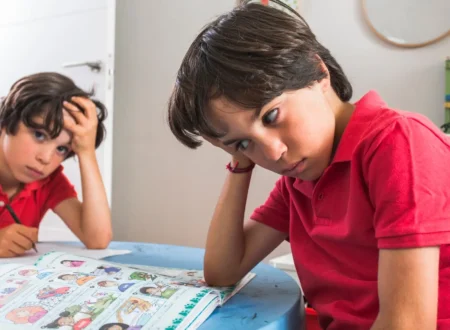Introduction:
Attachment is fundamental to human development, shaping individuals’ emotional, social, and cognitive well-being. It encompasses the emotional bond and connection between a child and their primary caregiver, laying the foundation for healthy relationships and psychological resilience. Understanding the dynamics of attachment is crucial for fostering secure bonds that promote optimal development and well-being in children. In this article, we delve into the intricacies of attachment, exploring its significance, types, influencing factors, and strategies for nurturing secure attachments.
Importance of Attachment
Attachment is really important for how a kid grows up. This deep emotional bond established in infancy forms the basis for healthy relationships and psychological well-being throughout one’s lifespan. Secure attachment provides children with a sense of safety and security, allowing them to explore the world with confidence, knowing they have a reliable caregiver to return to in times of need.
Moreover, the quality of attachment influences various aspects of development, including emotional regulation, social skills, cognitive functioning, and even physical health. Children who have secure attachment are usually better at handling tough times. This helps them stay mentally healthy and have good relationships when they grow up. So, it’s really important for both kids and families to understand and nurture this bond.
Types of Attachment are:

1-Secure Attachment: Children with secure attachments exhibit trust and confidence in their caregivers. They feel secure exploring their environment and seek comfort from their caregiver when distressed. Caregivers are responsive and attuned to the child’s needs, providing consistent support and reassurance.
2-Insecure-Avoidant Attachment: In this type of attachment, children show a reluctance to seek comfort from their caregivers and may actively avoid or ignore them when distressed. Caregivers may be emotionally unavailable or unresponsive to the child’s needs, leading the child to develop a self-reliant coping style.
3-Insecure-Resistant Attachment: Children with insecure-resistant attachment display clingy and dependent behavior toward their caregivers. They may show ambivalence in their reactions, seeking closeness while also resisting contact. Caregivers may inconsistently respond to the child’s needs, leading to confusion and anxiety.
4-Disorganized Attachment: Disorganized attachment is characterized by inconsistent and unpredictable behavior in both the child and caregiver. Children may exhibit disoriented or contradictory responses in stressful situations, reflecting a lack of coherent attachment strategies. Caregivers may display frightening or abusive behavior, contributing to the child’s disorganization.
Influencing Factors on Attachment
- Parental responsiveness
- Consistency of caregiving
- Emotional availability of caregivers
- Caregiver sensitivity to child’s cues
- Quality of interactions
- Attachment history of caregivers
- Child’s temperament
Strategies for Nurturing Secure Attachments
Nurturing secure attachment is essential for fostering healthy relationships and promoting optimal child development. One effective strategy is to prioritize responsive and sensitive caregiving, where parents attentively tune in to their child’s needs and provide consistent support and comfort. Engaging in positive interactions, such as play, affectionate touch, and shared activities, also strengthens the bond and fosters a sense of security. Additionally, creating a safe and nurturing environment at home, characterized by warmth, predictability, and emotional availability, can further enhance attachment. By prioritizing these strategies, caregivers can lay the foundation for secure attachment, ensuring that children feel loved, valued, and supported in their emotional and social development.
Effects of Secure Attachment on Child Development

- Enhanced emotional regulation skills
- Increased self-esteem and self-confidence
- Improved social competence and peer relationships
- Greater capacity for empathy and compassion
- Enhanced cognitive development and academic achievement
- Reduced risk of behavioral problems and mental health issues
- Better ability to cope with stress and adversity
- Formation of secure attachment patterns in future relationships
- Overall positive impact on long-term well-being and life satisfaction
Recognizing Signs of Insecure Attachment
Recognizing signs of insecure attachment is crucial for identifying potential challenges in relationships and implementing targeted interventions. Children with insecure attachment may exhibit various behavioral and emotional cues indicative of their underlying difficulties. These signs can include excessive clinginess or avoidance of physical contact, difficulty soothing or regulating emotions, frequent expressions of fear or anxiety, and challenges in forming trusting relationships with others. By attentively observing these indicators, caregivers, and professionals can gain insights into relational patterns and provide tailored support to promote secure bonds. Early recognition and intervention are essential for addressing insecure attachment and fostering healthy relationships that nurture emotional well-being and development.
What Interventions are available to Enhance Attachment?
Various interventions aim to enhance attachment and promote secure bonds. These interventions typically focus on improving parental sensitivity, responsiveness, and the quality of interactions. One commonly used approach is attachment-based parenting programs, which provide caregivers with education and support to develop positive caregiving skills and foster secure behaviors. These programs often incorporate techniques such as video feedback, where caregivers observe and reflect on their interactions to enhance sensitivity and attunement.
Cultural Beliefs and Values
Cultural beliefs and values shape parenting practices and attachment patterns. Different cultures may prioritize different styles, influencing caregiving behaviors. Norms regarding independence versus interdependence may impact attachment dynamics. Communication styles and expressions of affection vary across cultures, affecting relationships. Rituals and traditions may play a role in strengthening bonds. Socioeconomic factors within cultural contexts can influence attachment, such as access to resources and support systems. Attitudes towards childcare responsibilities and extended family involvement may influence dynamics. Migration and acculturation processes can also impact attachment, as families navigate cultural adaptation and identity formation.
Long-Term Impact of Attachment

The quality of attachment significantly influences adult relationships. Secure attachment lays the groundwork for individuals to form healthy and fulfilling relationships later in life. Adults who experienced secure attachment in childhood tend to have greater trust, intimacy, and communication skills in their relationships. They are better equipped to manage conflicts, show empathy, and establish secure attachments with romantic partners and friends. Conversely, individuals with insecure attachment may struggle with intimacy, trust issues, and difficulty forming and maintaining close relationships. The patterns established in early relationships often shape adult styles and impact various aspects of interactions. Therefore, nurturing secure attachment is vital for fostering positive relationships and overall well-being.
Future Directions in Research on Attachment
- Exploration of the impact of technology on attachment.
- Investigation of the role of epigenetics in shaping attachment patterns.
- Examination of the influence of socio-cultural factors on attachment dynamics.
- Integration of neuroscientific approaches to understand attachment mechanisms.
- Study of the long-term effects of early interventions aimed at improving attachment.
- Exploration of the role of non-traditional family structures and caregiving arrangements on attachment.
Read more: Family: Parent-child
Conclusion:
Attachment is a cornerstone of healthy development, influencing various aspects of individuals’ lives from infancy to adulthood. By prioritizing the nurturing of secure attachments, caregivers can lay the groundwork for their children’s emotional resilience, social competence, and overall well-being. As we continue to explore and understand attachment dynamics, we empower families and communities to foster environments that support healthy relationships and thriving individuals.
Frequently Asked Questions:
Q1: What is attachment?
Attachment refers to the emotional bond and connection formed between a child and their primary caregiver, typically the mother or father, which plays a crucial role in the child’s emotional, social, and cognitive development.
Q2: What are the different types of attachment?
The main types of attachment include secure attachment, insecure-avoidant attachment, insecure-resistant attachment, and disorganized attachment.
Q3: What factors influence attachment between parents and children?
Various factors influence attachment, including parental responsiveness, consistency of caregiving, emotional availability of caregivers, caregiver sensitivity to the child’s cues, quality of interactions, attachment history of caregivers, and the child’s temperament.
Q4: How can caregivers nurture secure attachments with their children?
Caregivers can nurture secure attachments by being emotionally responsive, providing consistent and sensitive caregiving, fostering a safe and supportive environment, and promoting positive parent-child interactions.
Q5: What are the long-term effects of secure attachment on child development?
Secure attachment is associated with better social skills, emotional regulation, self-esteem, and mental health outcomes in childhood and adulthood, as well as healthier adult relationships.
Q6: How can insecure attachment be addressed or improved?
Interventions such as parent education programs, attachment-focused therapies, and early childhood interventions can help address insecure attachment and improve parent-child relationships.




















